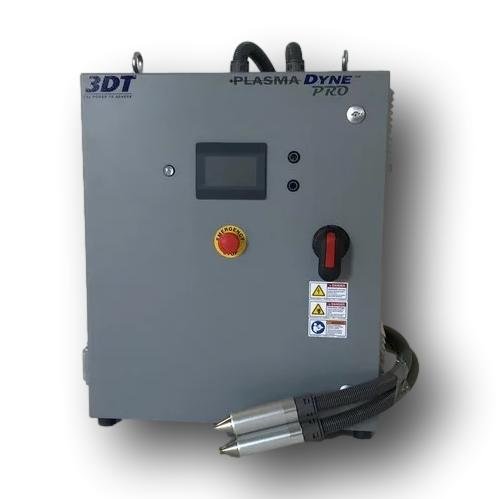
Plasma Treatment Systems
Plasma treatment systems are used to alter the surface properties on a wide range of materials vastly improving the adhesion of media such as adhesives, ink and paints. Plasma treatment systems also cleans and activates surfaces to improving adhesion.
Plasma surface treatment systems(also called in-air and atmospheric plasma) improves the wetting properties of polymeric materials, rubber, metals, glass, ceramics, paperboard and more. The molecules of these difficult-to-bond materials are modified by the plasma process to obtain better adhesion without causing harm to the surface.
Atmospheric plasma is created by combining reactive gas molecules and an electric field. This system uses one or more high voltage electrodes which charge the surrounding blown gas molecules, resulting in a highly ionized field that is forced onto the targeted surface. This highly ionized air stream creates a thermal property that reacts with the substrate and breaks the existing hydrogen bonds by introducing oxygen which recreates the chemical properties of the surface. The atmospheric plasma process causes an intensified reaction with the material resulting in better wettability, stronger bonding traits, micro cleaned surfaces and eliminates the possibility for unwanted backside treatment.
Plasma treatment is highly suitable for three-dimensional plastic parts, thin film, rubber profiles, coated paperboard and thicker materials such as foam and solid sheets of material. This technology is useful in many industrial sectors including medical, automotive, air and space, packaging, converting, narrow web, and polymer film.
Surface activation can be measured with a tensiometer which measures the contact angle of a droplet of water. A Dyne Solution Test Kit is another useful way to evaluate surface wettability.
Plasma Treatment Systems Products
Atmospheric plasma treatment system.
